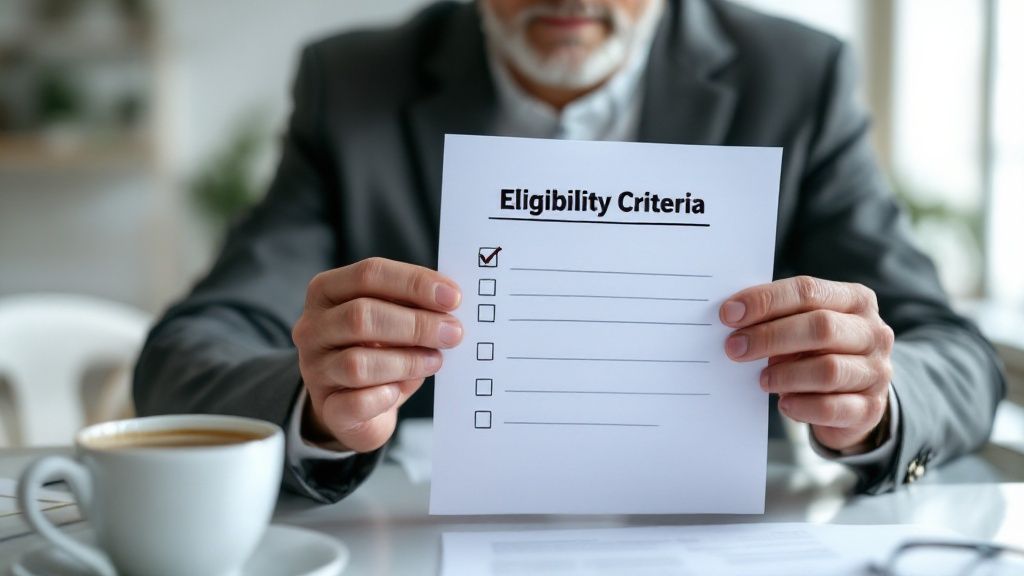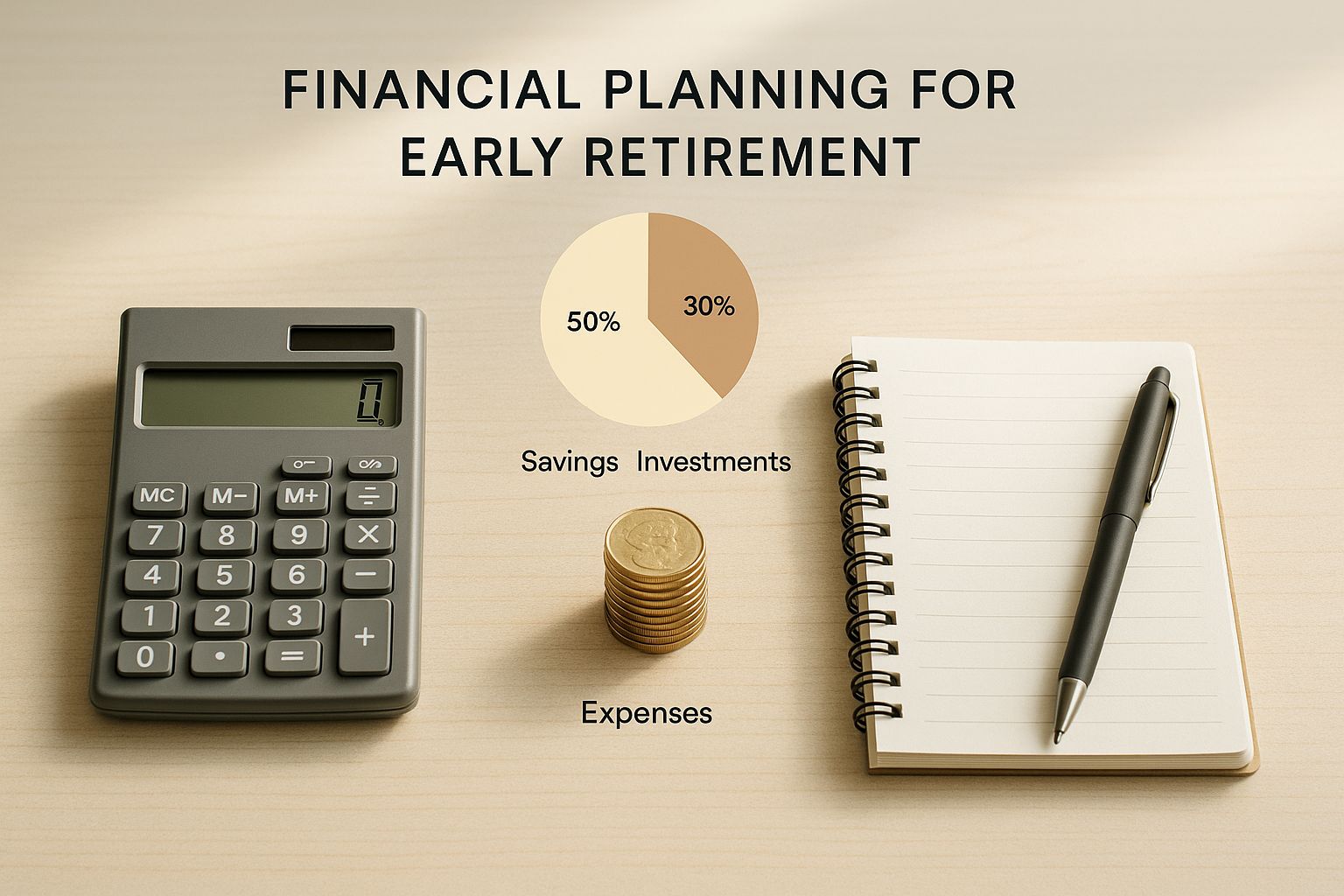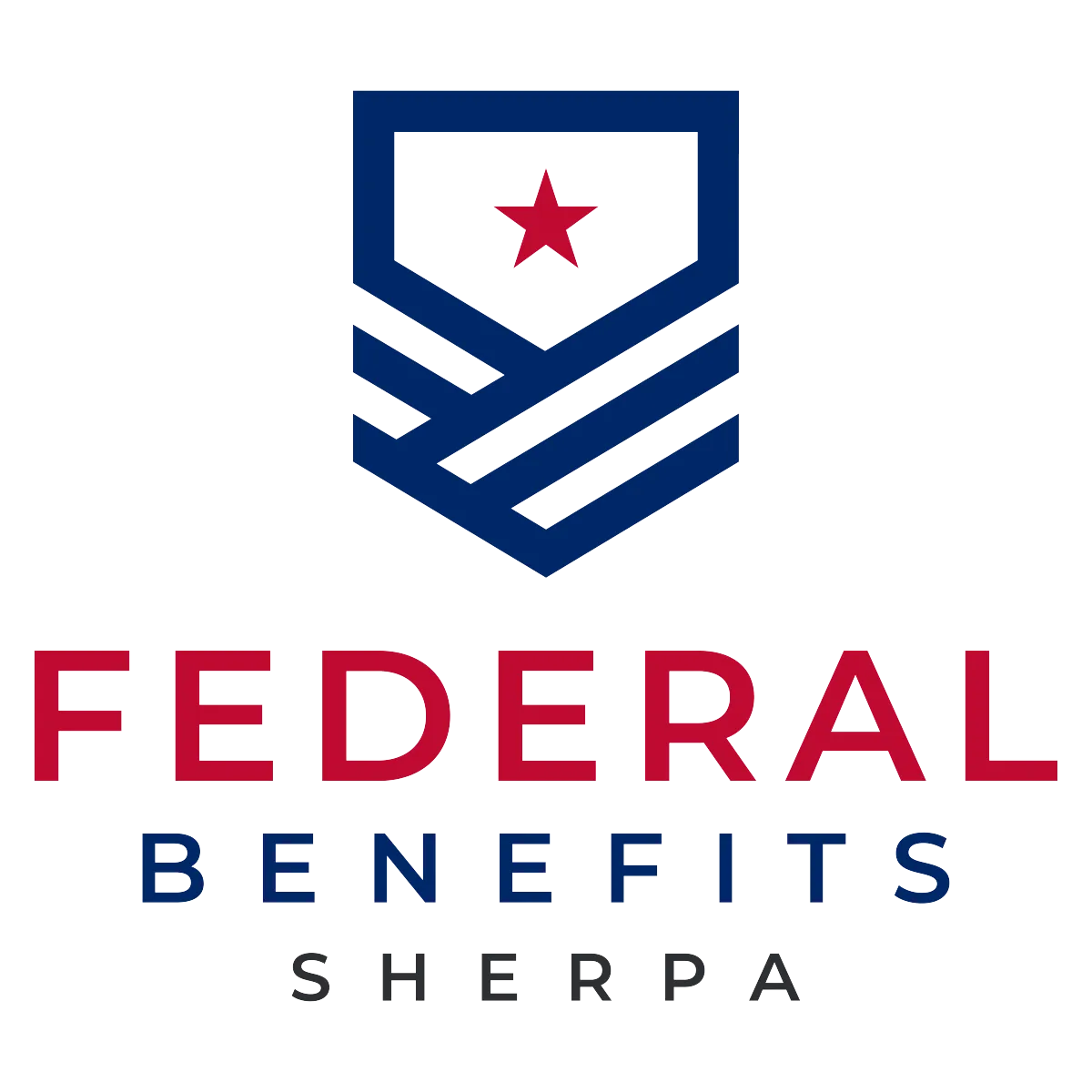Blogs

Blog title place here
We understand that every federal employee's situation is unique. Our solutions are designed to fit your specific needs.

Blog title place here
We understand that every federal employee's situation is unique. Our solutions are designed to fit your specific needs.

Blog title place here
We understand that every federal employee's situation is unique. Our solutions are designed to fit your specific needs.
Your Guide to Voluntary Early Retirement
When a federal agency needs to slim down or restructure, it doesn't always have to resort to layoffs. Instead, it might offer a special opportunity for certain employees to retire earlier than planned. This is known as voluntary early retirement.
It’s not a standing offer you can take whenever you want. Think of it as a strategic tool agencies use during specific periods of change—like a reorganization or downsizing—to reshape their workforce without forcing people out the door.
So, What Exactly Is Voluntary Early Retirement?
Imagine the standard path to retirement is a long, winding road with a set destination based on your age and years of service. Voluntary early retirement is like a special, limited-time-only exit ramp that your agency opens up. It lets you get off the highway sooner, but only when the agency needs to ease up on "traffic" – in this case, its budget and staffing levels.
This formal offer is typically made under the Voluntary Early Retirement Authority (VERA). It’s a management tool, plain and simple, designed to meet specific goals like cutting costs, eliminating outdated positions, or preventing a more disruptive reduction in force (RIF).
The Core Components of an Offer
When an agency rolls out a VERA offer, it’s essentially bending the normal retirement rules for a specific group of employees. This isn't just a hint to leave; it's a well-defined program with clear terms. The most important part? It's completely voluntary. The decision to take the offer is 100% yours.
These offers almost always include a few key things:
- Specific Eligibility Criteria: The agency will spell out exactly who qualifies, usually based on a minimum age and years of creditable service.
- A Defined "Window": VERA isn't an open-ended deal. You’ll have a specific timeframe—a window of opportunity—to make your decision and file the paperwork.
- Potential Financial Incentives: To sweeten the deal, these offers are often paired with a Voluntary Separation Incentive Payment (VSIP), commonly called a buyout.
You can think of an agency offering VERA like a gardener carefully pruning a tree. The goal isn't to hack away randomly but to strategically trim certain branches to help the tree grow stronger and healthier. It’s a deliberate move to maintain the overall health of the workforce.
Getting a handle on this concept is the first step. This isn't just about punching out a few years early; it's about responding to a strategic business decision made by your employer. That distinction is crucial because it affects everything from whether you're eligible to the long-term financial impact on your life. Taking this off-ramp requires a hard look at both the immediate opportunity and what it means for your future.
How to Determine Your Eligibility

Alright, so your agency has announced a voluntary early retirement opportunity. The first and most important question is: do you actually qualify? These offers aren't handed out to just anyone; they're specific, targeted, and come with a strict set of rules laid out by the Voluntary Early Retirement Authority (VERA).
Think of VERA eligibility as having the right combination for a lock. If your age and service time line up correctly, the door to an early exit opens. But if even one number is off, that door stays firmly shut.
For most federal employees, there are two main ways to qualify for a VERA offer. You only need to meet one of them.
The Two Main Pathways to VERA
The standard eligibility requirements boil down to a simple formula of age and years of service. These are hard-and-fast minimums, not flexible guidelines. If you don't meet them, you won't be considered.
Here are the two magic combinations:
- Age 50 with 20 Years of Service: You have to be at least 50 years old and have logged a minimum of 20 years of creditable service.
- Any Age with 25 Years of Service: Your age is irrelevant here, as long as you've put in at least 25 years of creditable service.
Let's look at a couple of quick examples to see this in action.
Federal Frank: Frank is 51 years old and has been with the government for 22 years. He easily meets the first requirement, making him a prime candidate for a VERA offer from his agency.
Seasoned Susan: Susan is only 48, but she started her federal career young and has already served for 26 years. Even though she's not yet 50, she clears the bar for the second pathway and is also eligible.
As you can see, there isn't just one type of employee who can qualify. It all depends on your unique career timeline and which path you might fit into.
What Counts as Creditable Service
That term, "creditable service," is a big deal. It's more than just the time you've spent at your current desk. For most feds under the Federal Employees Retirement System (FERS), it typically includes:
- Civilian Service: The time you've worked for the federal government while making contributions to your retirement fund.
- Military Service: In many situations, you can "buy back" your active-duty military time and have it count toward your total service.
- Unused Sick Leave: When you retire, a portion of your accumulated sick leave can be converted into additional service credit, which can sometimes be just enough to get you over the eligibility line.
It's crucial to check your official service computation date to know exactly where you stand. That date is the government's official record of when your clock started ticking.
Remember, a VERA is not a permanent benefit. It's a temporary, strategic tool used by agencies to manage their workforce. An offer made this year may not be available next year, making it a time-sensitive decision.
A Global Perspective on Retirement Security
The stability that makes an offer like VERA so appealing is part of a much bigger picture. The 2025 Natixis Global Retirement Index provides a fascinating look at how factors like national healthcare, unemployment, and income equality shape retirement security worldwide.
For instance, Norway consistently tops the list because of its strong social and economic bedrock. Ireland’s recent jump to second place shows how smart economic moves can boost retirement confidence for a whole country. This global context helps explain why federal agencies roll out these packages during specific periods of organizational or economic change.
Ultimately, your next step is to take these clear-cut rules and map them against your own career history. Only then will you know if you're in a position to consider this kind of life-changing opportunity.
Understanding the Financial Consequences
Deciding to take a VERA offer is a huge moment, but it’s far more than an emotional choice—it's one of the biggest financial decisions you'll ever make. Before you get too excited about leaving the 9-to-5 behind, you have to get real about the numbers. This isn't just about your last paycheck; it's about permanently reshaping your entire financial future.
It’s time to move past the daydream of early retirement and get down to brass tacks. What will your monthly budget actually look like? The freedom is tempting, I get it. But a clear-eyed look at the finances is what will make that freedom last.
The Impact on Your Annuity or Pension
Your federal annuity is the foundation of your retirement income. The calculation is straightforward: it’s based on your years of service and your "high-3" average salary (the average of your highest-paid 36 consecutive months). Taking a VERA directly impacts the "years of service" part of that formula.
Think of it like building a brick wall. Every year you work, you add another row of bricks, making the wall taller and stronger. Retiring early means you stop laying bricks. You still have a wall, but it’s shorter—and that reduction in your monthly annuity is permanent.

As the image suggests, every single piece of the puzzle matters. A small change in one area can have a big impact on your long-term financial stability.
To put this in perspective, let's compare the key differences between walking out the door with a VERA versus staying for a standard retirement.
Comparing Normal Retirement vs. Voluntary Early Retirement (VERA)
This table breaks down the crucial differences you need to weigh. It’s not just about when you leave, but what you leave with.
| Factor | Standard Retirement (FERS) | Voluntary Early Retirement (VERA) |
|---|---|---|
| Minimum Age | Age 62 (with 5 years), 60 (with 20 years), or MRA (with 30 years) | Age 50 (with 20 years) or any age (with 25 years) |
| Annuity Calculation | Based on full years of service at retirement | Based on fewer years of service, resulting in a smaller annuity |
| FERS Supplement | Eligible at Minimum Retirement Age (MRA) until age 62 | Eligible immediately upon retiring until age 62 |
| Annuity Reduction | No age-based reductions if eligibility is met | No age-based reductions, despite retiring before MRA |
| Buyout (VSIP) | Not applicable | Often includes a buyout of up to $25,000 (pre-tax) |
The main trade-off is clear: VERA lets you start your pension and the FERS supplement earlier, but the pension itself will be smaller for life because you have fewer years of service under your belt.
Navigating Your Thrift Savings Plan
Your Thrift Savings Plan (TSP) is the other pillar of your retirement. While your annuity is your steady paycheck, the TSP is your nest egg. Once you retire, you can access these funds, but how you do it has major consequences.
You'll need a smart withdrawal strategy that gives you the income you need without draining the account too quickly. This means thinking about your withdrawal options, how you'll handle market ups and downs, and, most importantly, taxes.
Any money you pull from a traditional TSP is taxed as regular income. If you take out a huge lump sum, you could easily get bumped into a much higher tax bracket for that year. A big chunk of your savings could end up with the IRS instead of in your pocket.
Preserving Your Health and Life Insurance
One of the best perks of being a federal employee is keeping your health insurance (FEHB) and life insurance (FEGLI) in retirement. But there’s a catch, and it’s a big one: the "five-year rule."
To carry these benefits into retirement, you must have been continuously enrolled for the five years immediately before you retire. If you waived coverage for even a short period within that five-year window, you could lose them for good. Check your records on this—it’s a detail you absolutely can’t afford to miss.
The Role of Buyout Payments
To sweeten the deal, your agency might offer a Voluntary Separation Incentive Payment (VSIP), also known as a buyout. This payment can be up to $25,000 (or your calculated severance pay, whichever is less).
A big check sounds fantastic, but let's be realistic about what it is.
- It's a Short-Term Cushion: This money is meant to help you transition, not fund your next 30 years.
- It's Taxable: That $25,000 isn't what you'll take home. It's fully taxed (federal, Social Security, and Medicare), so the net amount will be quite a bit smaller.
Everyone dreams of an early exit, but the data tells a more complicated story. The average U.S. retirement age actually fell between the 1970s and 1990s, but by 2020, it had crept back up as people started living longer and facing new economic realities. While a VERA can be a golden ticket for some, it's essential to understand the broader trends in retirement to see how your own plan fits into the bigger picture.
Weighing the Pros and Cons
Deciding whether to take a voluntary early retirement offer is so much more than a math problem. Yes, the numbers have to work, but this choice will fundamentally change your daily life, your finances, and your future. You're trading a steady paycheck and a familiar routine for years of newfound freedom—a trade-off with incredible highs and some very real lows.
This isn't just about clocking out for the last time; it's about redesigning the next chapter of your life. To make a smart decision, you have to look at both sides of the coin with clear eyes. Let's walk through the exciting possibilities and the potential pitfalls so you can figure out if this path is right for you.
The Allure of an Early Exit
Let's start with the big one: time. Getting years of your life back to do whatever you want is the ultimate prize for many. The daily grind, the looming deadlines, the office politics—all of it disappears. In its place, you get full control over your calendar and your life.
Think about what that freedom really means:
- Pursuing Passions: You can finally take that cross-country road trip, learn to play the guitar, or get serious about your gardening. All those hobbies you've been putting off? They can now take center stage.
- More Family Time: This could be your chance to be a hands-on grandparent, help care for aging parents, or simply be more available for the people who matter most.
- A Second Act: Many feds don't see this as a final retirement but as a launchpad. It’s the perfect opportunity to start a small consulting business, turn a hobby into an income stream, or go back to school for a degree you've always dreamed of—all without the pressure of a full-time job.
For some, a VERA offer feels like a lifeline. If your agency is going through a tough reorganization or your job has become a major source of stress, it can be a structured, dignified way to bow out during a period of uncertainty. That peace of mind alone can be priceless.
Confronting the Potential Downsides
Now for the reality check. The downsides are serious and demand your full attention. The initial thrill of leaving the workforce can wear off fast if you haven't prepared for the challenges ahead.
The biggest hurdle for most is financial. As we've covered, your pension will be permanently smaller. This isn't a temporary setback; it's a lifelong reduction in your monthly income. With people living longer than ever, you have to be absolutely sure your savings and investments can carry you through the next 20, 30, or even 40 years.
Healthcare is another massive consideration.
- Bridging the Healthcare Gap: If you retire at 57, you've got an eight-year gap until you're eligible for Medicare at age 65. You can usually keep your Federal Employees Health Benefits (FEHB), but paying those premiums without a government contribution can be a huge new expense.
- Loss of Identity: For decades, you've been a federal employee. Your job has shaped your routine, your social circle, and a big part of how you see yourself. When that's gone, it can feel jarring. Many early retirees go through a tough adjustment period, struggling to find a new sense of purpose.
- The Boredom Factor: The thought of endless free time is great, but what's the plan? After you've caught up on sleep and tackled a few projects around the house, you need a reason to get up in the morning. Without a plan, you risk feeling isolated and unfulfilled.
In the end, this is a deeply personal choice. It requires a brutally honest look at your finances, your long-term goals, and whether you're truly ready for such a massive shift in your life. By carefully weighing the exhilarating pros and the sobering cons, you can make a confident decision that sets you up for the future you truly want.
Navigating the Application Process

So, you’ve weighed your options, crunched the numbers, and decided that a voluntary early retirement offer is the right call for you. Excellent. Now it's time to switch gears from thinking to doing.
The application process can look like a mountain of paperwork and tight deadlines, but it's entirely manageable if you have a clear plan. Think of it as your last big project before graduating to a new stage of life—it's important, requires attention to detail, and it’s your ticket to what comes next.
Let's walk through the journey from the moment you get the official offer to the day you submit your final retirement package. The goal here is to turn a potentially stressful task into a smooth, confident transition.
Your Step-by-Step Action Plan
The second your agency officially opens a VERA window, the clock starts ticking. Your Human Resources (HR) department is going to be your best friend through this process, and they’ll almost certainly host informational briefings.
Go to these briefings. It’s non-negotiable. This is where you’ll get the agency-specific details, hard deadlines, and the chance to ask questions directly.
Once you’re armed with that initial information, your first real task is to get your documents in order. This is no time for guesswork; you need the official records to make sure your retirement is calculated correctly.
Track Down Your Service Records: The single most important document you’ll need is your SF-50 (Notification of Personnel Action). This form is the official paper trail of your entire federal career. You should have a copy of every SF-50 you've ever received, but if you don't, request your complete electronic Official Personnel Folder (eOPF) from HR right away.
Verify Your Service Computation Date (SCD): This date is the foundation for your total years of creditable service. Double-check that it accurately includes all your federal civilian time and any creditable military service. A small error here could have a big impact on your eligibility and your pension amount.
Gather Supporting Documents: You’ll likely also need your birth certificate, marriage certificate (if you’re applying for a survivor annuity), and your military discharge papers (the DD 214) if you're buying back military time.
Filling Out the Retirement Application
With all your documents laid out, you’re ready to tackle the retirement application itself. For most, this means either the SF 3107 (for FERS) or the SF 2801 (for CSRS). Don't rush this part. A simple mistake on these forms is the most common reason for delays in getting that first pension check.
Pro Tip: Before you turn anything in, make a complete copy of your entire application package. Scan it, photocopy it—whatever you need to do. Having your own backup provides incredible peace of mind while you wait for the final approval.
This move toward an earlier career exit is part of a much bigger picture. Globally, the age people leave the workforce varies wildly, often shaped by national policies and economic pressures. While the average exit age in OECD countries actually rose between 2002 and 2022, it often remains below the official retirement age. This just shows that leaving work before the traditional pension age is a common goal, and offers like VERA are how the U.S. federal system makes that possible. You can learn more about how retirement systems are evolving in this 2025 analysis of global trends.
Final Checks and Submission
Before you sign on that final dotted line, take a deep breath and run through one last checklist. This is your chance to catch any small errors before they become big headaches.
- Double-Check the Math: Manually verify the calculations on your annuity estimates.
- Confirm Your Elections: Be absolutely sure about your choices for survivor benefits and insurance coverages.
- Get a Receipt: After you submit your package, get written confirmation from HR that they have it. A simple email will do. If you don't hear back, follow up.
By approaching this process methodically, you can eliminate a ton of anxiety. Staying organized and proactive ensures the administrative side of your retirement is handled smoothly, letting you focus on the exciting chapter ahead.
Got Questions About Early Retirement? We've Got Answers.
As you get closer to deciding on a voluntary early retirement offer, the big picture starts to break down into smaller, more practical questions. You've looked at the numbers and thought about your lifestyle, but now those nagging "what if" questions are probably surfacing. Getting solid answers to these is the final piece of the puzzle.
Let’s clear up some of the most common uncertainties. We'll cover what happens if you decide to come back to federal work, how this type of retirement differs from another that sounds very similar, and what happens to all that leave you've carefully saved up.
Can I Return to Federal Work After Retiring?
This is a huge one, and for good reason. The short answer is yes, you can, but there's a major catch. If you took a Voluntary Separation Incentive Payment (VSIP)—often called a "buyout"—you are generally on the hook to repay the full, pre-tax amount if you come back to work for the government within five years of leaving.
This isn't just for full-time GS positions, either. The rule typically applies whether you return as a permanent employee, a part-timer, or even as a contractor. The government's logic is simple: the buyout is meant to shrink the workforce, not to bankroll a long vacation for someone who plans on coming right back.
There are a few very specific exceptions to this rule, so it's absolutely essential to read the fine print of your specific buyout agreement before making any moves.
How Is This Different from a Discontinued Service Retirement?
It's incredibly easy to mix up a Voluntary Early Retirement Authority (VERA) offer with a Discontinued Service Retirement (DSR). After all, the eligibility rules are the same: you can retire at age 50 with 20 years of service, or at any age with 25 years. But the "why" behind them couldn't be more different.
Think of it this way: VERA is an invitation to leave, while DSR is a consequence of being told to leave. You choose to take a VERA. A DSR happens to you when your job is eliminated through something like a reduction in force (RIF).
This isn't just a matter of wording. A DSR isn't an option you select; it's a benefit you qualify for when you're involuntarily separated and don't have another federal job lined up. The end result might look the same—early retirement—but how you get there is completely different.
What Happens to My Unused Leave?
After decades of service, your leave balances are more than just numbers on a pay stub; they're a real financial asset. The good news is, you don't forfeit this value when you take a VERA.
Here's the breakdown:
Annual Leave: Any unused annual leave is paid out to you as a one-time, lump-sum payment. The amount is calculated using the hourly pay rate you would have earned if you'd stayed on the job. Just remember, this payout is fully taxable income.
Sick Leave: Your sick leave works differently. It is not paid out. Instead, every hour of your unused sick leave is converted into additional creditable service time, which then gets added to your record for calculating your pension. This can provide a small but permanent increase to your monthly annuity payment for the rest of your life.
Getting clarity on these details helps eliminate any last-minute surprises. With each question answered, you can move forward with more confidence, ready for a smooth transition into your next chapter.
Navigating the complexities of federal benefits can be a challenge, but you don't have to do it alone. Federal Benefits Sherpa is here to guide you through every step of your retirement journey. Schedule your free 15-minute benefit review today and gain the clarity you need for a secure future. Visit us at https://www.federalbenefitssherpa.com to get started.

Dedicated to helping Federal employees nationwide.
“Sherpa” - Someone who guides others through complex challenges, helping them navigate difficult decisions and achieve their goals, much like a trusted advisor in the business world.
Email: [email protected]
Phone: (833) 753-1825
© 2024 Federalbenefitssherpa. All rights reserved

